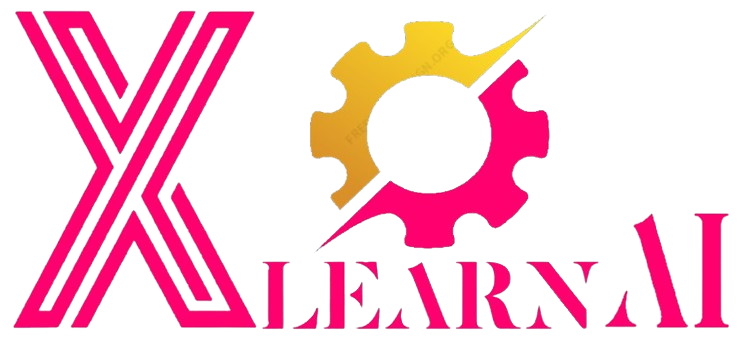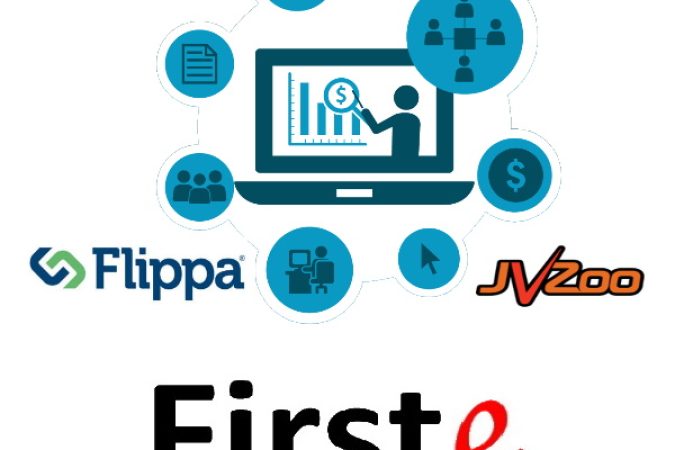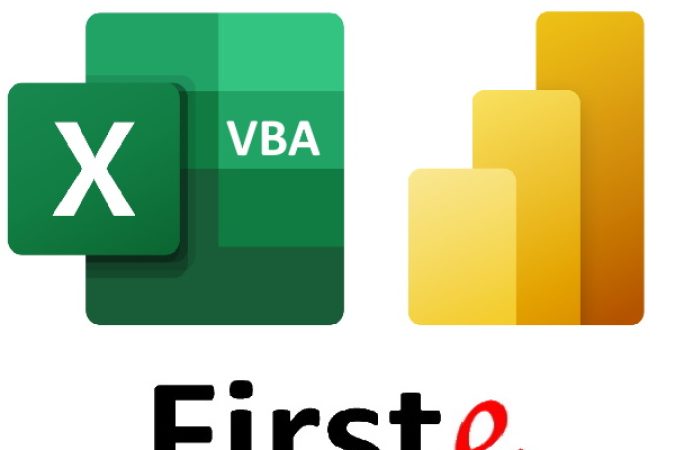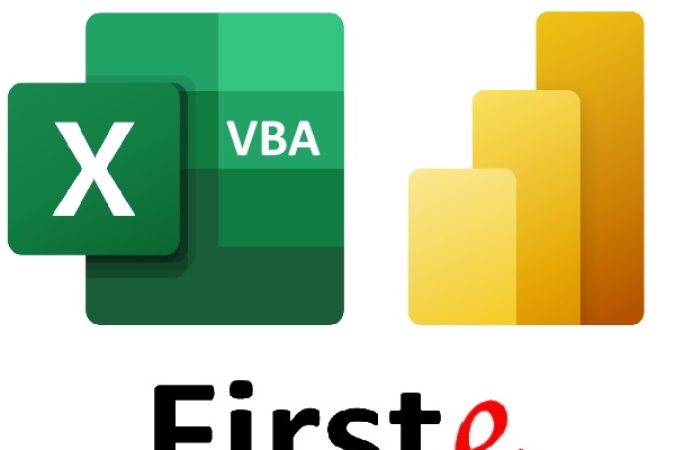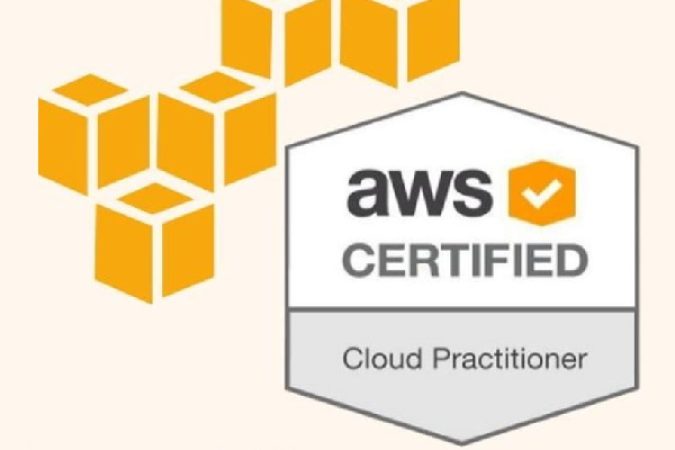Machine Learning and Data Science with Python Masterclass
Machine Learning and Data Science with Python Masterclass 2021
Learn how to use Machine Learning, Data Science, Matplotlib , NumPy, Plotly , Scikit-Learn , Tensorflow , Pandas, Seaborn , and more!
This Machine Learning with Python course dives into the basics of machine learning using Python. You’ll learn about supervised vs. unsupervised learning, look into how statistical modeling relates to machine learning, and do a comparison of each.
In this practical, hands-on course you’ll learn how to program using Python for Data Science and Machine Learning. This includes data analysis, visualization, and how to make use of that data in a practical manner.
Our main objective is to give you the education not just to understand the ins and outs of the Python programming language for Data Science and Machine Learning, but also to learn exactly how to become a professional Data Scientist with Python and land your first job.
We’ll go over some of the best and most important Python libraries for data science such as NumPy, Pandas, and Matplotlib +
NumPy — A library that makes a variety of mathematical and statistical operations easier; it is also the basis for many features of the pandas library.
Pandas — A Python library created specifically to facilitate working with data, this is the bread and butter of a lot of Python data science work.
NumPy and Pandas are great for exploring and playing with data. Matplotlib is a data visualization library that makes graphs as you’d find in Excel or Google Sheets. Blending practical work with solid theoretical training, we take you from the basics of Python Programming for Data Science to mastery.
Python coding experience is either required or recommended in job postings for data scientists, machine learning engineers, big data engineers, IT specialists, database developers, and much more. Adding Python coding language skills to your resume will help you in any one of these data specializations requiring mastery of statistical techniques.
The course covers 5 main areas:
1: PYTHON FOR DS+ML COURSE INTRO
This intro section gives you a full introduction to the Python for Data Science and Machine Learning course, data science industry, and marketplace, job opportunities and salaries, and the various data science job roles.
Intro to Data Science + Machine Learning with Python
Data Science Industry and Marketplace
Data Science Job Opportunities
How To Get a Data Science Job
Machine Learning Concepts & Algorithms
2: PYTHON DATA ANALYSIS/VISUALIZATION
This section gives you a full introduction to the Data Analysis and Data Visualization with Python with hands-on step by step training.
Python Crash Course
NumPy Data Analysis
Pandas Data Analysis
Matplotlib
Seaborn
Plotly
3: MATHEMATICS FOR DATA SCIENCE
This section gives you a full introduction to the mathematics for data science such as statistics and probability.
Descriptive Statistics
Measure of Variability
Inferential Statistics
Probability
Hypothesis Testing
4: MACHINE LEARNING
This section gives you a full introduction to Machine Learning including Supervised & Unsupervised ML with hands-on step-by-step training.
Intro to Machine Learning
Data Preprocessing
Linear Regression
Logistic Regression
K-Nearest Neighbors
Decision Trees
Ensemble Learning
Support Vector Machines
K-Means Clustering
PCA
5: STARTING A DATA SCIENCE CAREER
This section gives you a full introduction to starting a career as a Data Scientist with hands-on step by step training.
Creating a Resume
Creating a Cover Letter
Personal Branding
Freelancing + Freelance websites
Importance of Having a Website
Networking
By the end of the course you’ll be a professional Data Scientist with Python and confidently apply for jobs and feel good knowing that you have the skills and knowledge to back it up.
Here is some of What you’ll learn:
- 140+ Python Machine Learning and Data Science videos
- Use Python for Data Science and Machine Learning
- Use Spark for Big Data Analysis
- Implement Machine Learning Algorithms
- Learn to use NumPy for Numerical Data
- Learn to use Pandas for Data Analysis
- Learn to use Matplotlib for Python Plotting
- Learn to use Seaborn for statistical plots
- Use Plotly for interactive dynamic visualizations
- Use SciKit-Learn for Machine Learning Tasks
- K-Means Clustering
- Logistic Regression
- Linear Regression
- Random Forest and Decision Trees
- Natural Language Processing and Spam Filters
- Neural Networks
- Support Vector Machines
Thank you very much for getting started with “Master Python for Machine Learning and Data Science.”
We imagine you are going to love what’s next. Go Hack’m
Don’t waste your time
REMEMBER… You will get lifetime access to over 140 lectures.
So, what are you waiting for? Click the buy button NOW, increase your knowledge, become a Professional Machine Learning Expert and advance your career all in a fun and practical way!
Don’t miss this Limited Time Offer. ACT NOW!
You will Learn by Practice:
By the end of this Unique Course, you will go from #Newbie to #Advanced as an #Python_Programmer. Here is what you’ll learn:
1 Introduction
- Who is this course for
- Data science + machine learning marketplace
- Data science job opportunities
- Data science job roles
- What is data scientist
- How to get a data science job
- Data science projects overview
2 Data Science and Machine Learning Concepts
- Why we use python
- What is data science
- What is machine learning
- Machine learning concepts & algorithms
- What is deep learning
- Machine learning vs deep learning
3 Python For Data Science
- What is programming
- Why python for data concepts
- What is jupyter
- What is google colab
- Python variables, Booleans and none
- Getting started with google colab
- Python operators
- Python numbers & Booleans
- Python strings
- Python conditional statements
- Python for loops and while loops
- Python lists
- More about lists
- Python tuples
- Python dictionaries
- Python sets
- Compound datatypes & when to use each one
- Python functions
- Object oriented programming in python
4 Statistics for Data Science
- Intro to statistics
- Descriptive statistics
- Measure of variability
- Measure of variability continued
- Measure of variability relationship
- Inferential statistics
- Measure of asymmetry
- Sampling distribution
5 Probability & Hypothesis Testing
- What is exactly is probability
- Expected values
- Relative frequency
- Hypothesis testing overview
6 NumPy Data Analysis
- Intro numpy array datatypes ( 1.1 NumPy Basics PDF )
- Numpy arrays
- Numpy arrays basics
- Numpy array Indexing
- Numpy array computations
- Broadcasting
7 Pandas Data Analysis
- Introduction to pandas (1.1 Pandas & 1.2 Pandas Basics PDF )
- Introduction to pandas continues
8 Python Data Visualization
- Data Visualization Overview
- Different Data Visualization Libraries in Python
- Python Data Visualization Implementation
9 Machine Learning
- Introduction To Machine Learning (1.1 Supervised Learning PDF )
10 Data Loading & Exploration
- Exploratory Data Analysis
11 Data Cleaning
- Feature scaling
- Data cleaning
12 Feature Selecting and Engineering
- Feature Engineering
13 Linear and Logistic Regression
- Linear Regression Intro
- Gradient Descent
- Linear Regression + Correlation Methods
- Linear Regression Implementation
- Logistic Regression
14 K Nearest Neighbors
- KNN Overview
- Parametric vs non-parametric models
- EDA on Iris Dataset
- The KNN Intuition
- Implement the KNN algorithm from scratch
- Compare the result with the sklearn library
- Hyperparameter tuning using the cross-validation
- The decision boundary visualization
- Manhattan vs Euclidean Distance
- Feature scaling in KNN
- Curse of dimensionality
- KNN use cases
- KNN pros and cons
15 Decision Trees
- Decision Trees Section Overview
- EDA on Adult Dataset
- What is Entropy and Information Gain
- The Decision Tree ID3 algorithm from scratch Part 1
- The Decision Tree ID3 algorithm from scratch Part 2
- The Decision Tree ID3 algorithm from scratch Part 3
- ID3 – Putting Everything Together
- Evaluating our ID3 implementation
- Compare with Sklearn implementation
- Visualizing the tree
- Plot the features importance
- Decision Trees Hyper-parameters
- Pruning
- [Optional] Gain Ration
- Decision Trees Pros and Cons
- [Project] Predict whether income exceeds $50Kyr – Overview
16 Ensemble Learning and Random Forests
- Ensemble Learning Section Overview
- What is Ensemble Learning
- What is Bootstrap Sampling
- What is Bagging
- Out-of-Bag Error (OOB Error)
- Implementing Random Forests from scratch Part 1
- Implementing Random Forests from scratch Part 2
- Compare with sklearn implementation
- Random Forests Hyper-Parameters
- Random Forests Pros and Cons
- What is Boosting
- AdaBoost Part 1
- AdaBoost Part 2
17 Support Vector Machines
- SVM Outline
- SVM intuition
- Hard vs Soft Margins
- C hyper-parameter
- Kernel Trick
- SVM – Kernel Types
- SVM with Linear Dataset (Iris)
- SVM with Non-linear Dataset
- SVM with Regression
- SMV – Project Overview
18 K-means
- Unsupervised Machine Learning Intro
- Unsupervised Machine Learning Continued
- Representing Clusters
19 PCA
- PCA Section Overview
- What is PCA
- PCA Drawbacks
- PCA Algorithm Steps (Mathematics)
- Covariance Matrix vs SVD
- PCA – Main Applications
- PCA – Image Compression
- PCA – Data Preprocessing
- PCA – Biplot and the Screen Plot
- PCA – Feature Scaling and Screen Plot
- PCA – Supervised vs Unsupervised
- PCA – Visualization
20 Data Science Career
- Creating A Data Science Resume
- Data Science Cover Letter
- How to Contact Recruiters
- Getting Started with Freelancing
- Top Freelance Websites
- Personal Branding
- Networking Do’s and Don’ts
- Importance of a Website
21 Additional Content: Grand Finale
- Bonus Lectures. Enjoy the Benefits
You could also end up using these skills in your work for Your #Clients, and much more.
We really hope you find this course valuable, but either way, please leave a review and share your experience…
Curriculum
- 21 Sections
- 141 Lessons
- Lifetime
- Section 1: 1 Introduction7
- 1.11. Who is this course for3 Minutes
- 1.22. Data science + machine learning marketplace7 Minutes
- 1.33. Data science job opportunities5 Minutes
- 1.44. Data science job roles11 Minutes
- 1.55. What is data scientist17 Minutes
- 1.66. How to get a data science job19 Minutes
- 1.77. Data science projects overview12 Minutes
- Section 2: 2 Data Science and Machine Learning Concepts6
- Section 3: 3 Python For Data Science19
- 3.114. What is programming6 Minutes
- 3.215. Why python for data concepts5 Minutes
- 3.316. What is jupyter4 Minutes
- 3.417. What is google colab4 Minutes
- 3.518. Python variables, Booleans and none12 Minutes
- 3.619. Getting started with google colab9 Minutes
- 3.720. Python operators26 Minutes
- 3.821. Python numbers & Booleans8 Minutes
- 3.922. Python strings13 Minutes
- 3.1023. Python conditional statements14 Minutes
- 3.1124. Python for loops and while loops8 Minutes
- 3.1225. Python lists6 Minutes
- 3.1326. More about lists15 Minutes
- 3.1427. Python tuples12 Minutes
- 3.1528. Python dictionaries21 Minutes
- 3.1629. Python sets10 Minutes
- 3.1730. Compound datatypes & when to use each one13 Minutes
- 3.1831. Python functions15 Minutes
- 3.1932. Object oriented programming in python19 Minutes
- Section 4: 4 Statistics for Data Science8
- 4.133. Intro to statistics7 Minutes
- 4.234. Descriptive statistics7 Minutes
- 4.335. Measure of variability13 Minutes
- 4.436. Measure of variability continued10 Minutes
- 4.537. Measure of variability relationship8 Minutes
- 4.638. Inferential statistics16 Minutes
- 4.739. Measure of asymmetry2 Minutes
- 4.840. Sampling distribution8 Minutes
- Section 5: 5 Probability & Hypothesis Testing4
- Section 6: 6 NumPy Data Analysis6
- Section 7: 7 Pandas Data Analysis2
- Section 8: 8 Python Data Visualization3
- Section 9: 9 Machine Learning1
- Section 10: 10 Data Loading & Exploration1
- Section 11: 11 Data Cleaning2
- Section 12: 12 Feature Selecting and Engineering1
- Section 13: 13 Linear and Logistic Regression5
- Section 14: 14 K Nearest Neighbors13
- 14.166. KNN Overview3 Minutes
- 14.267. Parametric vs non-parametric models4 Minutes
- 14.368. EDA on Iris Dataset22 Minutes
- 14.469. The KNN Intuition2 Minutes
- 14.570. Implement the KNN algorithm from scratch12 Minutes
- 14.671. Compare the result with the sklearn library4 Minutes
- 14.772. Hyperparameter tuning using the cross-validation11 Minutes
- 14.873. The decision boundary visualization5 Minutes
- 14.974. Manhattan vs Euclidean Distance6 Minutes
- 14.1075. Feature scaling in KNN6 Minutes
- 14.1176. Curse of dimensionality8 Minutes
- 14.1277. KNN use cases4 Minutes
- 14.1378. KNN pros and cons6 Minutes
- Section 15: 15 Decision Trees16
- 15.179. Decision Trees Section Overview5 Minutes
- 15.280. EDA on Adult Dataset17 Minutes
- 15.381. What is Entropy and Information Gain22 Minutes
- 15.482. The Decision Tree ID3 algorithm from scratch Part 112 Minutes
- 15.583. The Decision Tree ID3 algorithm from scratch Part 28 Minutes
- 15.684. The Decision Tree ID3 algorithm from scratch Part 34 Minutes
- 15.785. ID3 – Putting Everything Together22 Minutes
- 15.886. Evaluating our ID3 implementation17 Minutes
- 15.987. Compare with Sklearn implementation9 Minutes
- 15.1088. Visualizing the tree11 Minutes
- 15.1189. Plot the features importance6 Minutes
- 15.1290. Decision Trees Hyper-parameters12 Minutes
- 15.1391. Pruning17 Minutes
- 15.1492. [Optional] Gain Ration3 Minutes
- 15.1593. Decision Trees Pros and Cons8 Minutes
- 15.1694. [Project] Predict whether income exceeds $50Kyr – Overview3 Minutes
- Section 16: 16 Ensemble Learning and Random Forests13
- 16.195. Ensemble Learning Section Overview4 Minutes
- 16.296. What is Ensemble Learning13 Minutes
- 16.397. What is Bootstrap Sampling9 Minutes
- 16.498. What is Bagging6 Minutes
- 16.599. Out-of-Bag Error (OOB Error)8 Minutes
- 16.6100. Implementing Random Forests from scratch Part 123 Minutes
- 16.7101. Implementing Random Forests from scratch Part 26 Minutes
- 16.8102. Compare with sklearn implementation4 Minutes
- 16.9103. Random Forests Hyper-Parameters5 Minutes
- 16.10104. Random Forests Pros and Cons6 Minutes
- 16.11105. What is Boosting5 Minutes
- 16.12106. AdaBoost Part 14 Minutes
- 16.13107. AdaBoost Part 215 Minutes
- Section 17: 17 Support Vector Machines10
- 17.1108. SVM Outline5 Minutes
- 17.2109. SVM intuition12 Minutes
- 17.3110. Hard vs Soft Margins14 Minutes
- 17.4111. C hyper-parameter5 Minutes
- 17.5112. Kernel Trick13 Minutes
- 17.6113. SVM – Kernel Types19 Minutes
- 17.7114. SVM with Linear Dataset (Iris)14 Minutes
- 17.8115. SVM with Non-linear Dataset13 Minutes
- 17.9116. SVM with Regression6 Minutes
- 17.10117. SMV – Project Overview5 Minutes
- Section 18: 18 K-means3
- Section 19: 19 PCA12
- 19.1121. PCA Section Overview5 Minutes
- 19.2122. What is PCA10 Minutes
- 19.3123. PCA Drawbacks4 Minutes
- 19.4124. PCA Algorithm Steps (Mathematics)13 Minutes
- 19.5125. Covariance Matrix vs SVD5 Minutes
- 19.6126. PCA – Main Applications3 Minutes
- 19.7127. PCA – Image Compression27 Minutes
- 19.8128. PCA – Data Preprocessing15 Minutes
- 19.9129. PCA – Biplot and the Screen Plot18 Minutes
- 19.10130. PCA – Feature Scaling and Screen Plot10 Minutes
- 19.11131. PCA – Supervised vs Unsupervised5 Minutes
- 19.12132. PCA – Visualization8 Minutes
- Section 20: 20 Data Science Career8
- 20.1133. Creating A Data Science Resume7 Minutes
- 20.2134. Data Science Cover Letter4 Minutes
- 20.3135. How to Contact Recruiters5 Minutes
- 20.4136. Getting Started with Freelancing4 Minutes
- 20.5137. Top Freelance Websites6 Minutes
- 20.6138. Personal Branding4 Minutes
- 20.7139. Networking Do’s and Don’ts4 Minutes
- 20.8140. Importance of a Website3 Minutes
- Section 21: 21 Additional Content: Grand Finale1
Courses you might be interested in
-
71 Lessons
-
8 Lessons
-
76 Lessons
-
8 Lessons
